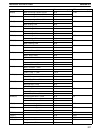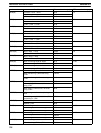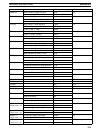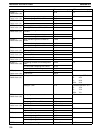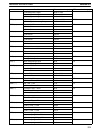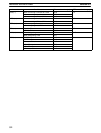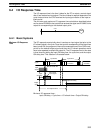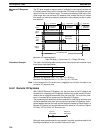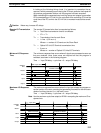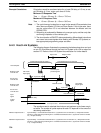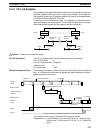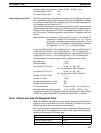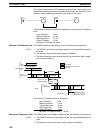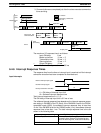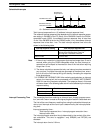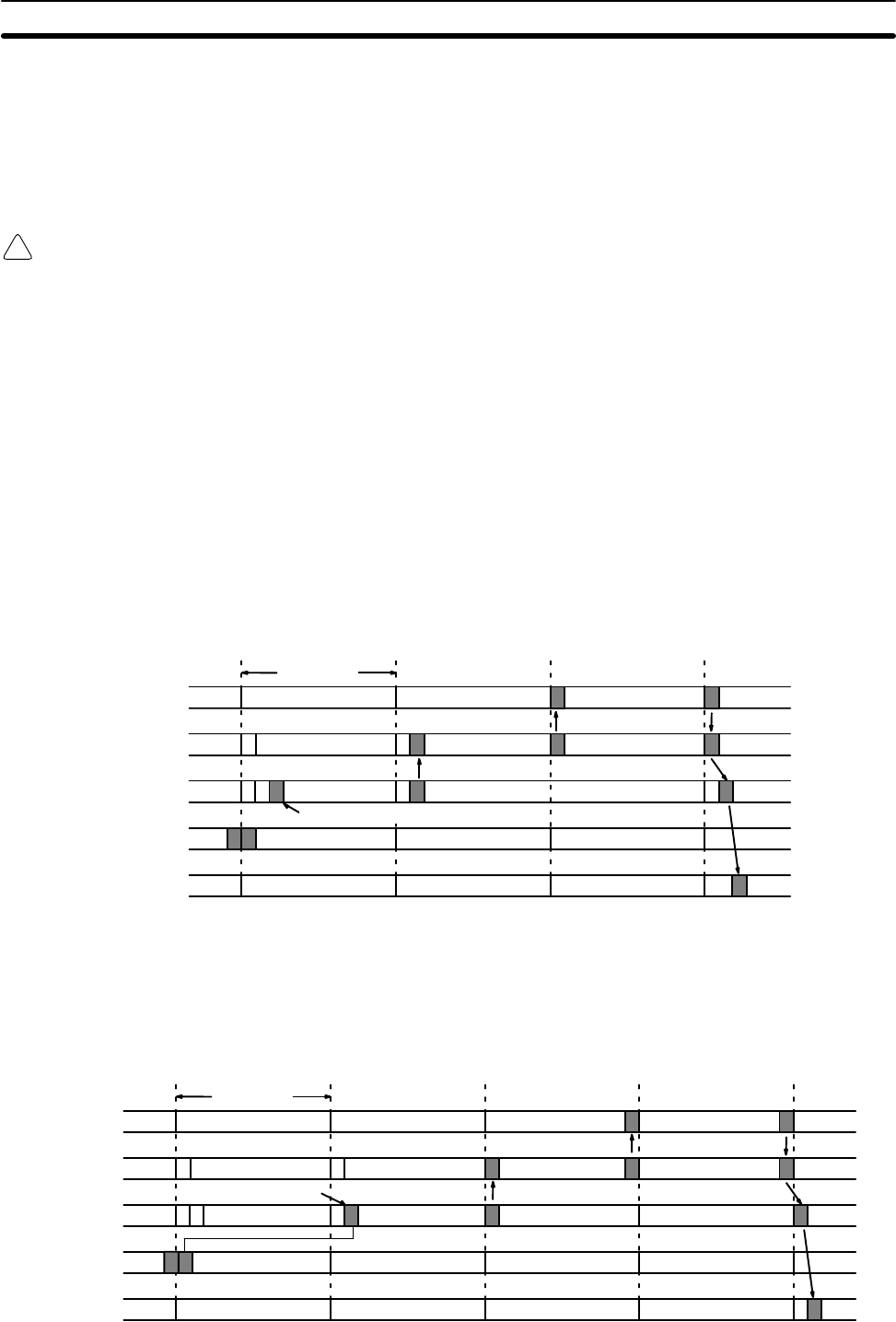
!
335
In looking at the following timing charts, it is important to remember the se-
quence in which processing occurs during the PC scan, particular that inputs will
not produce programmed actions until the program has been executed.
When calculating the response times involving inputs and outputs from another
CPU connected by an I/O Link Unit, the cycle time of the controlling CPU and the
cycle time of the PC to which the I/O Link Unit is mounted must both be consid-
ered.
Caution Noise may increase I/O delays.
The remote I/O transmission time is computed as follows:
T
RM = Total Slave transmission time for one Master
= ΣT
RT + TTT
TRT = Transmission time for each Slave
= 1.4 ms + (0.2 ms x n)
Where n = number of I/O words on the Slave Rack
T
TT = Optical I/O Unit/I/O Terminal transmission time
= 2 ms x m
Where m = number of Optical I/O Units/I/O Terminals
The minimum response time occurs when all signals are processed as soon as
they are received. Here, three scans are required so that the program is
executed, as shown in the following diagram.
Time = Input ON delay + cycle time x 3 + output ON delay
Cycle time
C200HS
CPU
Master
Slave
Input
Output
Program execution
Transfer to CPU
Transfer to Master
Slave I/O refresh
The maximum response time occurs when the input just misses the program ex-
ecution portion of the scan, meaning that processing must wait for the next trans-
mission and then the next (i.e., the fourth) scan.
Time = Input ON delay + cycle time x 4 + output ON delay
Note Use the maximum cycle time output to AR 26 in computing the maximum I/O re-
sponse time.
Cycle time
C200HS
CPU
Master
Slave
Input
Output
Program execution
Transfer to CPU
Transfer to MasterSlave I/O refresh
Remote I/O Transmission
Times
Minimum I/O Response
Time
Maximum I/O Response
Time
I/O Response Time Section 6-4



